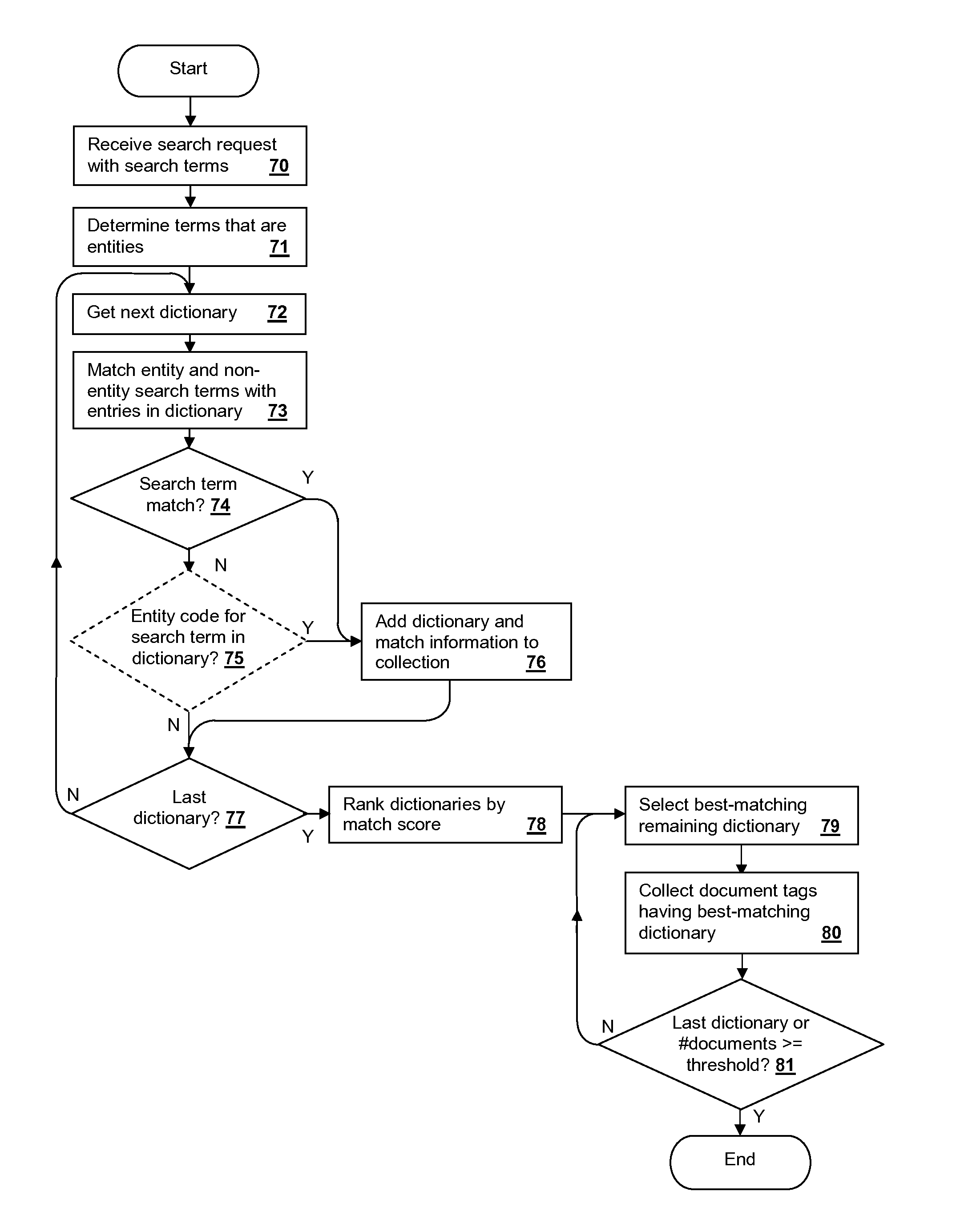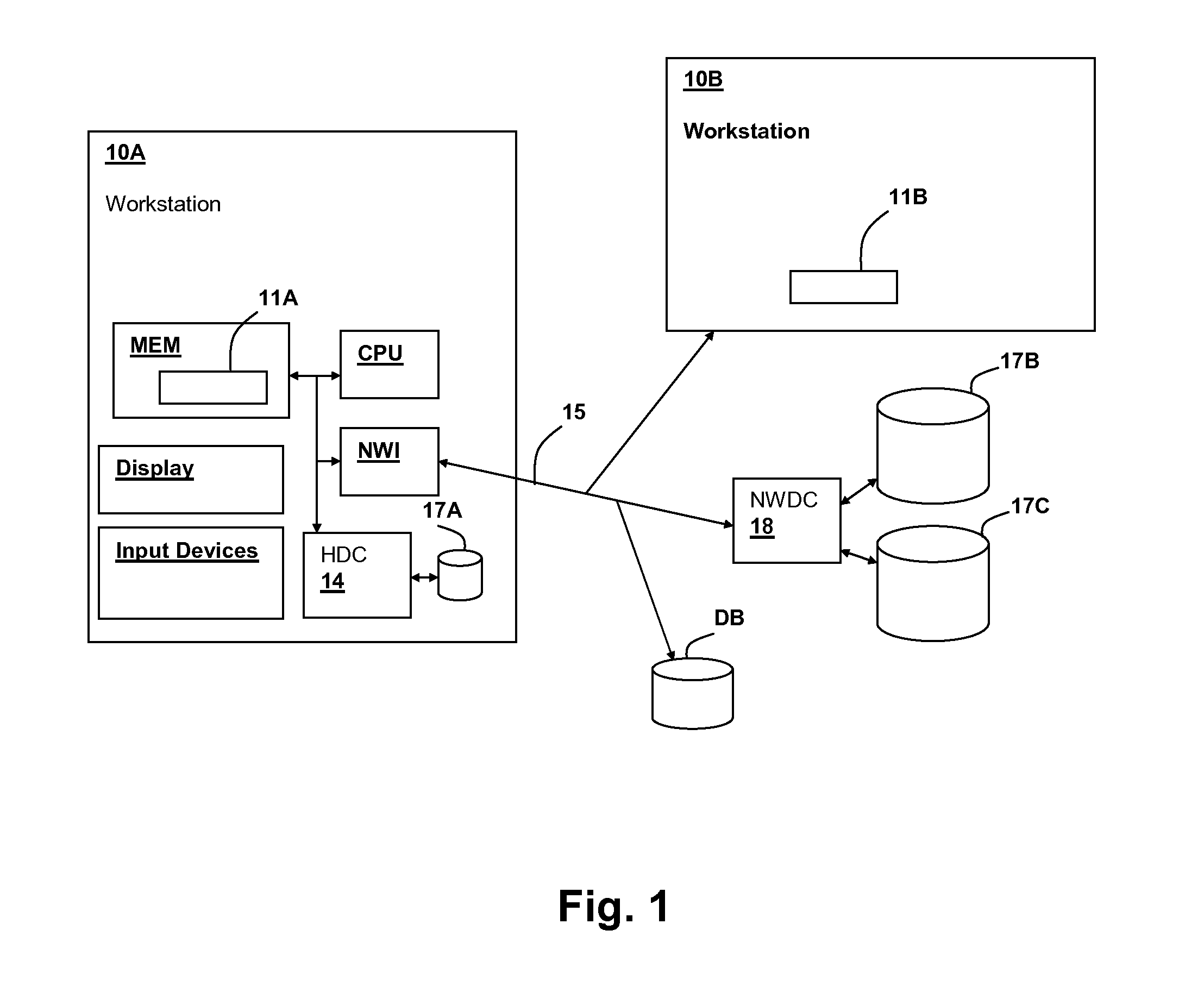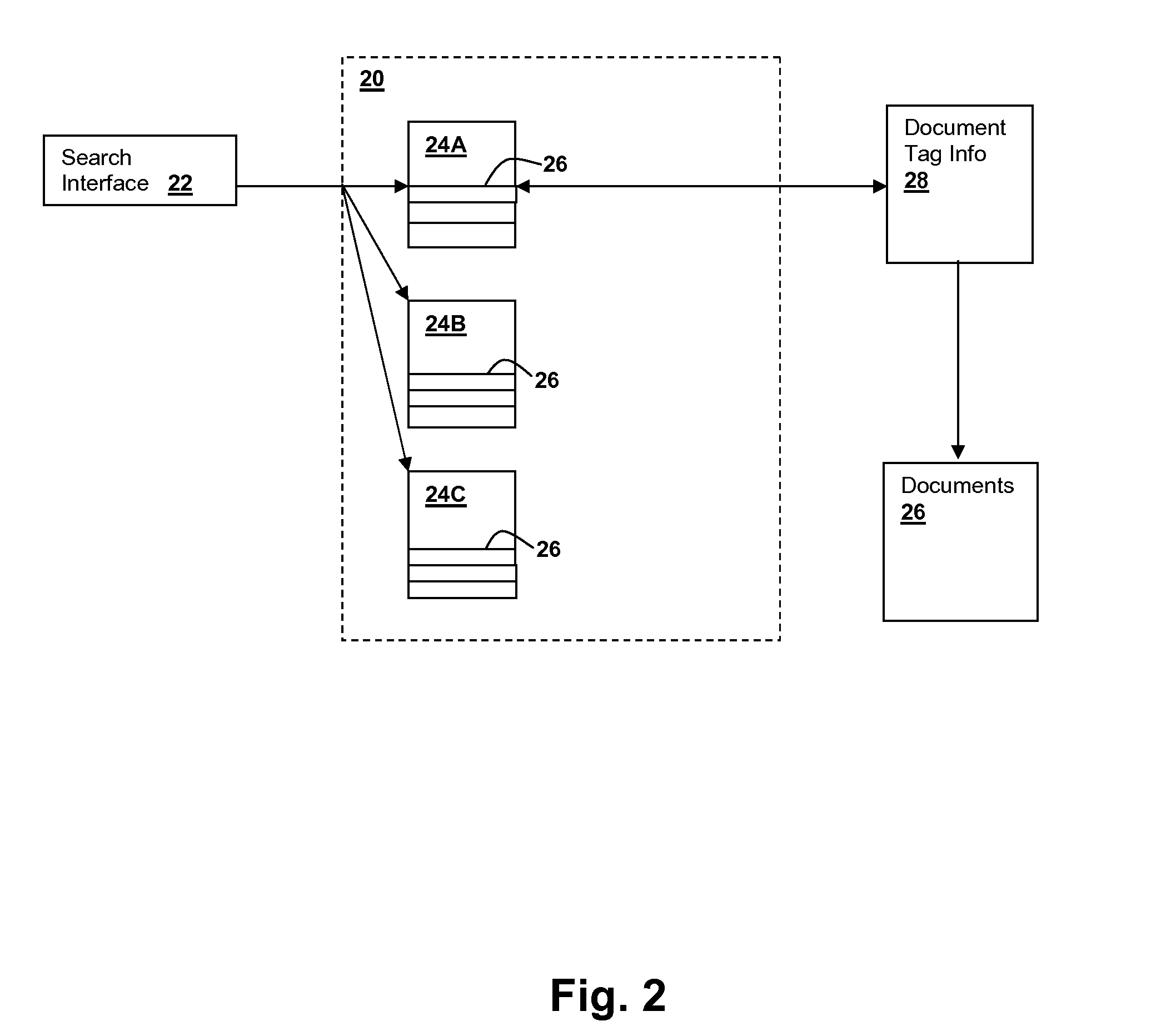Document tagging and retrieval using entity specifiers
a document and entity technology, applied in document management systems, relational databases, instruments, etc., can solve the problems of increasing the size of the response to a query, and achieve the effect of efficient categorizing and retrieving documents
- Summary
- Abstract
- Description
- Claims
- Application Information
AI Technical Summary
Benefits of technology
Problems solved by technology
Method used
Image
Examples
Embodiment Construction
[0017]The present invention relates to document tagging and retrieval, and in particular to techniques for identifying and retrieving files in big data collections. Multiple dictionaries, each having a corresponding subject, contain terms that are associated with the subject, i.e., the terms that ordinarily occur in association with the subject in written documents. Thus, a term may occur across multiple dictionaries, but have a different meaning or descriptive power with respect to different subjects. Some of the terms or entries, are indicated as entities, thus the dictionary system distinguishes between entity and non-entity terms. A dictionary may include a non-entity and one or more entity entries for a single term, as a term may have multiple entity meanings. Entities may be brands (trademarks / service marks), trade names, geographic identifiers or other classes of terms having special meaning. The term entries in each dictionary have a code or other indicator that specifies wh...
PUM
 Login to View More
Login to View More Abstract
Description
Claims
Application Information
 Login to View More
Login to View More - R&D
- Intellectual Property
- Life Sciences
- Materials
- Tech Scout
- Unparalleled Data Quality
- Higher Quality Content
- 60% Fewer Hallucinations
Browse by: Latest US Patents, China's latest patents, Technical Efficacy Thesaurus, Application Domain, Technology Topic, Popular Technical Reports.
© 2025 PatSnap. All rights reserved.Legal|Privacy policy|Modern Slavery Act Transparency Statement|Sitemap|About US| Contact US: help@patsnap.com



